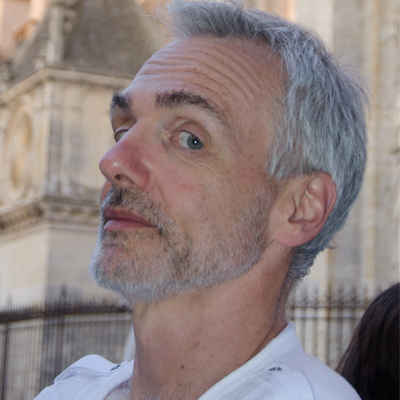By understanding how genetics and anesthetics interplay to affect outcomes from trauma, we can improve preoperative care of individual patients
Dr. Misha Perouansky, Professor in the Department of Anesthesiology at University of Wisconsin-Madison School of Medicine and Public Health, uses a novel fruit fly model to elucidate the ways anesthesia affects outcomes from trauma. This topic is highly relevant for both public and individual health because trauma is an important cause of morbidity, mortality and health resource utilization and almost every victim of severe trauma will undergo (frequently multiple and prolonged) anesthetics during the critical illness that follows life-threatening injury. Therefore learning whether modulation of outcome by anesthetics exists (as suggested by preliminary data) and manipulating this modulation to benefit trauma victims is of substantial importance for society.
In addition to characterizing the effect of different anesthetics on trauma he and his collaborators aim to develop genetic markers that will predict whether specific anesthetic drugs will either beneficially or detrimentally affect the outcome in individual trauma victims. They will explore conventional and novel anesthetics as well as non drug-related factors (such as age, sex and timing of the exposure to anesthetics) that may influence this interaction. Most importantly, they will examine whether naturally occurring variations in the genetic makeup of individuals affect the interaction between trauma and anesthesia. The goal is to identify the most effective and beneficial anesthetics for use in trauma patient as well as to predict which trauma patients will benefit and which may be harmed by exposure to individual anesthetics during recovery from trauma.
It is well-known that general anesthetics interact with many molecular targets throughout the body. The principal effects—those resulting in anesthesia— have been studied extensively for more than 160 years.. Common known side effects (blood pressure, heart rate, and breathing) have been characterized extensively, are monitored routinely and can be controlled. These easily observable effects, however, represent only the tip of an iceberg where anesthetic interactions with the body’s biology is concerned. The vast majority of interactions taking place in each organism exposed to general anesthetics are ‘under the water’, invisible unless searched for and largely of still unknown clinical significance. It is known, however, that anesthetics can either harm or benefit tissues in the body: they can cause cell death or protect organs depending on the circumstances of administration. Anesthetics can also exert long-lasting biological effects in various tissues (notably the brain) that persist long after the drug has been completely eliminated from the body. The goal of Dr. Perouansky’s research is to investigate these interactions. To this end he closely collaborates with Drs. David Wassarman and Barry Ganetzky (see references), two notable geneticists (who developed the novel trauma model in fruit flies that he is using) as well as other experts from various fields at the University of Wisconsin. The data obtained thus far shows that anesthetics do indeed affect outcome from trauma in this model and that the effect differs between individual, chemically similar anesthetic drugs as well as the conditions of administration. Detailed pharmacologic and genetic investigations using fruit flies are ongoing.
Is trauma in flies relevant to humans? Trauma in flies obviously does not equal trauma in humans. However, system-level responses to trauma have evolved over eons and effective biological mechanisms have been conserved throughout evolution. On the genetic level, flies and humans have a lot in common: 70-80% of identified disease-causing genes in humans have orthologs in flies. Therefore, similarities between fly and human in the response to injury are expected. In fact, they become ever more prominent the more severe the injury and the more systemic (i.e. not organ-specific) the response: evolution conserves mechanisms that have proven by natural selection to be effective and only tweaks them to adjust for different lifestyles. Any organism facing life-threatening injury turns on all protective systems to control the injury, limit its impact and repair the damage. In humans, 80% of genes in white blood cells respond to trauma by changing their activity (gene expression) and an analogous response happens in all organisms involving similar genes. But anesthetics (even when administered without any trauma) also affect gene expression. What happens when anesthetics are introduced with all biological systems in ‘overdrive’ fighting for survival? Anesthetics will certainly interact with many of the activated pathways in ways that might be beneficial, harmful or biologically neutral - depending on the specific drug and the circumstances but nobody knows.
In trauma both pharmacology and genetics are tightly intertwined with biology and hence difficult to study. Therefore any researcher is faced with the dilemma of how to best approach trauma experimentally: how does one navigate between the mechanistically unsolvable complexity of higher organisms while not losing the holistic aspect of the whole organism in ‘reduced’ (i.e. simplified) models? The ideal, therefore, would be a model that based on a whole organism but with ‘tractable complexity.
What do genes have to do with trauma? Research in the last decades has made it obvious that the influence of the genome on all interactions of an organism with its environment is overwhelming.However, while there is no doubt that genes are crucial it is also clear that in the vast majority of conditions no single gene determines outcome: like many other common diseases the response to trauma is a quantitative trait determined by many (hundreds or thousands of) genes. Sophisticated and realistic trauma models have been developed in large animals (e.g. pigs). However, their exorbitant cost and concerns for animal welfare severely constrain the experimenter. The former renders genetic association studies impossible the latter necessitates anesthesia during trauma thereby precluding the study of the anesthetic effects on outcome. This is where the fruit fly can be invaluable: it has a brain, a heart and intestines, it is available in unlimited quantities, it is genetically well-understood and, with minimal animal welfare concerns, the fly can answer fundamental questions which cannot be even asked in higher animals. In contrast to mammals, the fly genome has been sequenced in unparalleled detail: every nucleotide in each gene is known. This detailed knowledge enables Dr. Perouansky and his collaborators to explore the relationship between anesthetics and traumatized organisms in great detail.
Current research topics include:
- Does an Ideal Anesthetic Already Exist? Today, no data is available to help a clinician decide which is the best drug to administer to a severely traumatized patient heading to the operating room for life-saving surgery. Currently, no one one knows which anesthetic works best for an individual's defense mechanisms and may results in a better outcome. In order to clarify this question, Dr. Perouansky and his collaborators administer different anesthetic at varying time intervals before and after trauma. They look at the whole organism’s response in each experiment, and have discovered differential effects on outcome between two chemically similar agents. These findings indicate that the type of anesthetic used after trauma has an important effect on an organism’s response to injury. Dr. Perouansky and his collaborators continue testing different clinically used drugs to determine what anesthetics—individually or in combination—are beneficial in traumatized patients.
- Why Do Genes and Age Matter for Trauma Outcome? By testing over two hundred fly lines, Dr. Perouansky’s collaborators have found that genetic background dramatically affects the resilience of flies to trauma. The next step is to find out whether genes matter for the interaction between anesthetics and trauma. Age is also an important factor in trauma patients. Age increases mortality from trauma in humans, even after adjusting for comorbidities (i.e. existing diseases that become more frequent with age). Age also increases mortality in flies of all genetic backgrounds. Whether anesthetics have the same effect on outcome in young as in old organisms is unknown.
- Can Genetic Signatures be Developed to Predict Anesthetic Effects? Dr. Perouansky and his collaborators are exploring whether an organism's genetic background influences how anesthetics interact with trauma. Because they have access to more than 200 fully-sequenced fly strains each having a different genetic background which have been collected from the wild (in addition there are many artificial mutations that can be used for specific questions), they can apply advanced population genetic analysis to identify which genes are affected by exposure to anesthetics. Once the genes will be known, they will explore the effect of corresponding genes in mammals. Their goal is to develop genetic signatures that enable them to predict whether a specific anesthetic will benefit or harm a specific individual: precision medicine in the trauma OR.
- What Roles Does the Innate Immune System Play? After surviving trauma of similar severity, some people will go home after a few days in the ICU, but others will develop a protracted life-threatening response. In the latter patients, it is not the immediate organ injury that determines outcome, but the response of their bodies to that injury. In humans and other mammals, this response to trauma involves activation of the innate and adaptive immune systems. Because these systems are so closely interlinked, it's very difficult to determine which elements of which system are lead to an excessive reaction. Flies, however, have only the innate immune system (like 95% of all living organisms). Taking advantage of biology, Dr. Perouansky and his collaborators are able to track down how the innate immune system responds and potentially overreacts to trauma and which of its elements contribute to bad outcomes. They hypothesize that differential modulation of the innate immune system by anesthetics may lie at the core of their drug-specific effects on outcome. Exploration of this novel concept in flies will lay the groundwork for targeted experiments in mammals and translation to humans with the goal of creating precision medicine in the context of trauma.
- What role do mitochondria (the cell’s power plants) play? Trauma is a period of increased energy metabolism. Numerous genetic variations in mitochondria exist (a number of diseases have been linked to them) and we know that anesthetics interact with mitochondrial energy generating activity. What we do not know is whether and what an effect this interaction has in the context of trauma.
Bio
Dr. Misha Perouansky has always believed that scientific research was the noblest pursuit of mankind. However, early in his career, he did not think it would be his pursuit. Trained as general practitioner with an M.D. from Ludwig-Maximilians University in Munich Germany, fate soon sent him on an excursion in basic science. He thought it was temporary, but now, many years later, he continues to explore the scientific realm while continuing to practice clinical medicine. His research in physiology and anesthetics has profoundly shaped his approach to clinical medicine as an anesthesiologist in a tertiary care university hospital.
Dr. Perouansky has been interested in anesthetics for the last 25 years. When starting residency, he picked up a textbook to learn how anesthetics work. To his surprise, even though anesthetics have been administered to millions of people over more than 150 years, he found no answer and decided to study this question.
After Dr. Perouansky heard about the fruit fly trauma model developed at the University of Wisconsin-Madison, he invited its creator, Dr. Wassarman, to give a lecture. This lecture had a profound impact on Dr. Perouansky. He knew that this novel model was perfect for exploring how anesthetics affect the outcomes of trauma on a fundamental biological level. Critical experiments using large numbers of genetically diverse and well-characterized animals, as well as experiments unthinkable in mammals, were possible. He decided to collaborate with Dr. Wassarman to explore these unanswered questions using fruit flies and abandoning mammalian models he had used previously. Dr. Perouansky merges his expertise in anesthetics and his clinical perspective on trauma in humans with Dr. Wasserman’s extensive knowledge of genetics and his fruit fly model to form a successful interdisciplinary collaboration. Together—with their diverse backgrounds—they strive make real progress in understanding the use of anesthesia in trauma patients with the goal of providing precision medicine in this challenging patient population.


